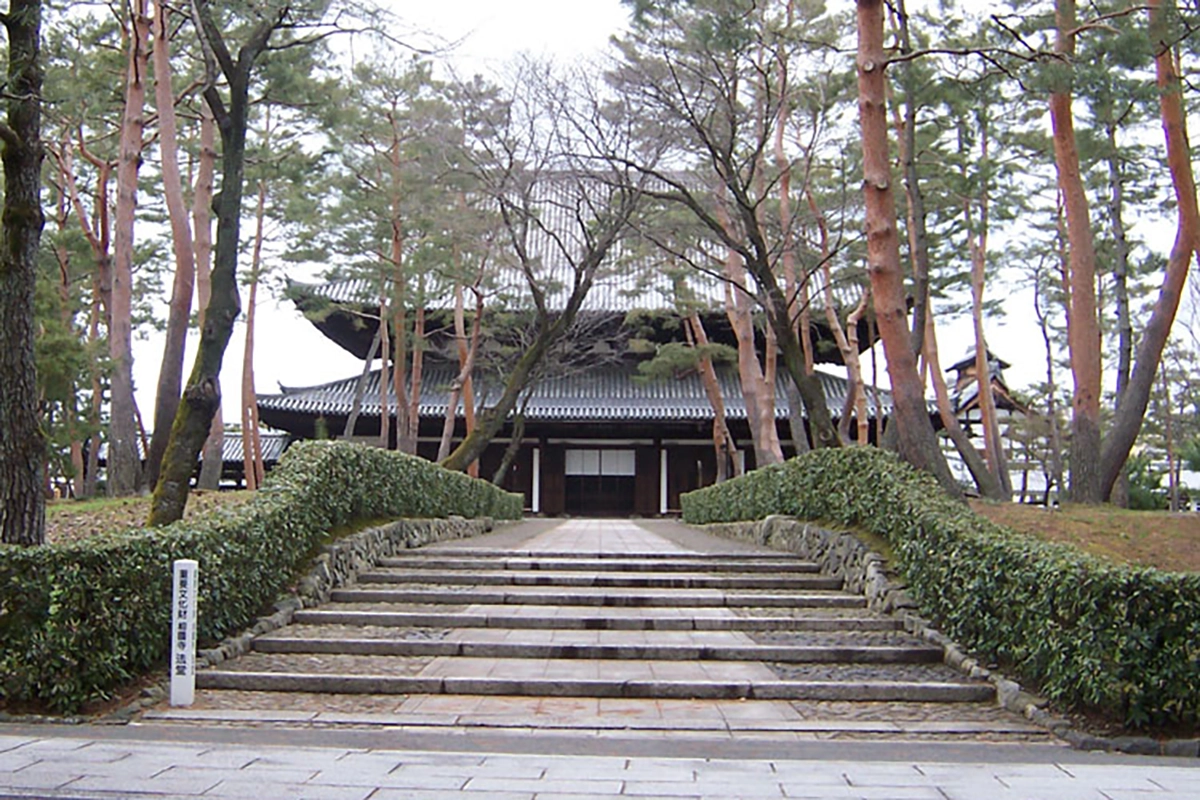Shokoku-ji: A Timeless Journey through Kyoto’s Cultural Treasure
Nestled amidst the timeless charm of Kyoto, Japan, stands Shokoku-ji, one of the illustrious Kyoto Five Mountain Zen temples. This historical and cultural treasure has graced the city’s landscape since 1382 when it was founded by the visionary third Muromachi shogun, Ashikaga Yoshimitsu, at the imperial request. With a legacy that spans over six centuries, Shokoku-ji occupies a special place in the hearts of both locals and travelers, revered as a national project and a sacred hub of the Muso lineage of Zen Buddhism.
Upon entering the temple’s hallowed grounds, visitors are transported back in time to a place where history and spirituality intertwine seamlessly. The intricate architecture, serene gardens, and a rich tapestry of art and culture make Shokoku-ji a must-visit destination for anyone seeking to explore the soul of Kyoto.
The very essence of Shokoku-ji is embodied in its architectural marvels. At the heart of the temple complex stands the Daitoku-den, an awe-inspiring grand hall that houses a statue of Buddha, flanked by two bodhisattvas. This architectural masterpiece is not just a testament to the Muromachi era’s design prowess but also a national treasure, a sanctuary of serenity where visitors can contemplate the profound teachings of Zen Buddhism.
As you continue your journey through Shokoku-ji, you’ll encounter the Hojo, an exquisite residence that once served as the head priest’s living quarters. The Hojo is a living testament to the elegance and refinement of traditional Japanese architecture, a place where the past whispers softly through the polished wooden floors and tranquil tatami rooms. Stepping into the Hojo is like stepping back in time, a glimpse into the daily life of the temple’s spiritual leaders.
Beyond its architectural wonders, Shokoku-ji beckons visitors to lose themselves in its breathtaking gardens. These meticulously designed landscapes are considered among the most beautiful in all of Japan. As you wander through the tranquil grounds, you’ll encounter meandering stone paths, picturesque bridges, and serene ponds that mirror the grandeur of the natural world. However, the gardens truly come alive in autumn when the leaves transform into a kaleidoscope of reds, oranges, and yellows, creating a mesmerizing tapestry of colors that captivates the senses and stirs the soul.
In addition to its architectural and natural beauty, Shokoku-ji is a repository of cultural and historical treasures. The temple’s vast collection includes a myriad of artistic and religious artifacts that provide a unique window into Japan’s rich heritage. Paintings, calligraphy, and Buddhist statues grace the temple’s halls, offering a profound glimpse into the country’s artistic and spiritual traditions.
Of particular note is the temple’s collection of Zen art, a precious assembly of works created by some of Japan’s most celebrated artists. These pieces bear witness to the spiritual and artistic evolution that has occurred within the temple’s walls over the centuries. They serve as a testament to the enduring power of Zen Buddhism to inspire creativity and self-expression.
In conclusion, Shokoku-ji is more than just a temple; it’s a journey through time and culture, a place where history and spirituality converge, and where the natural world and human craftsmanship blend seamlessly. Visiting Shokoku-ji is like embarking on a pilgrimage to the heart of Kyoto’s soul, where the past and present coexist in perfect harmony. As you stand in awe of its architectural wonders, stroll through its enchanting gardens, and immerse yourself in its cultural treasures, you’ll discover that Shokoku-ji is not just a destination; it’s an invitation to explore the very essence of Kyoto itself.
